This Is Exactly How The Latest Ballistic Missile Defense Test Worked
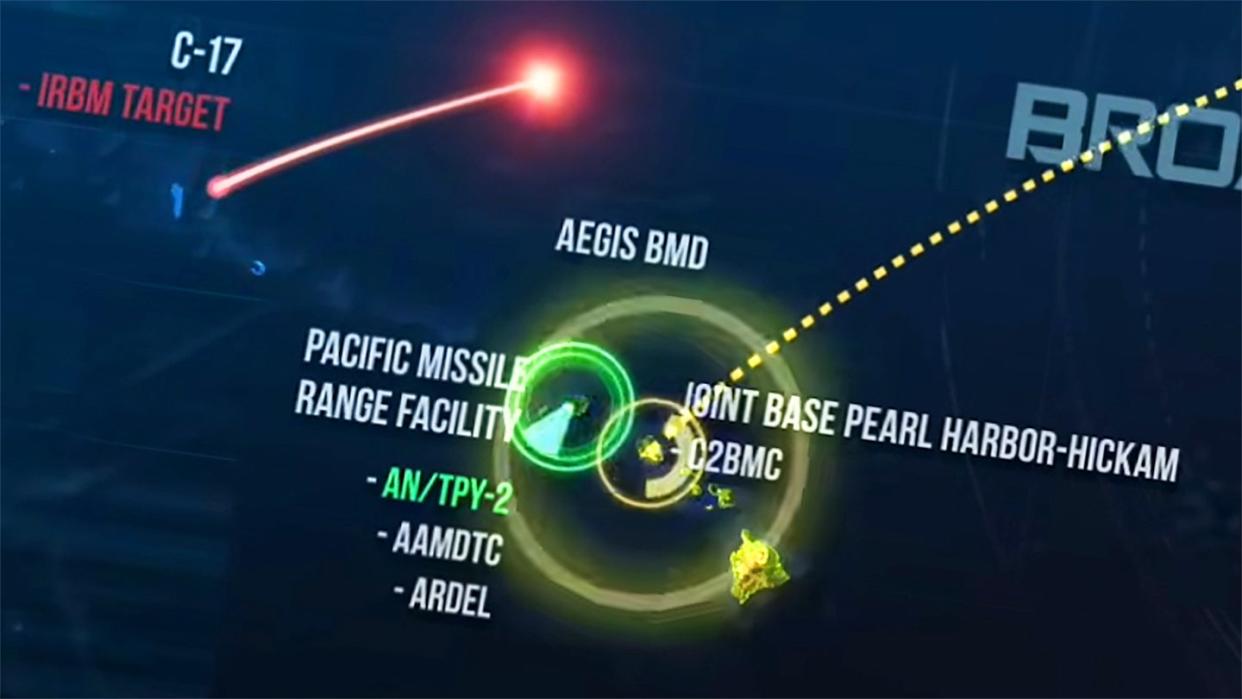
In the wake of its latest test of the Ground-based Midcourse Defense (GMD) system, the U.S. Missile Defense Agency has published a video explainer that provides a very useful description of what exactly happened in that complex engagement process, as well as how much of the overarching U.S. missile defense architecture actually works. The test earlier this week also showcased an upgraded version of the Ground-Based Interceptor (GBI) — the lethal component of the GMD system that is intended to physically knock out ballistic missile threats to the U.S. homeland while they are still in space.
Before examining it in more detail, you can watch the full video here:
https://www.youtube.com/watch?v=kxRDK2SYSlg
Led by a Missile Defense Agency and Boeing team — and also involving in U.S. Northern Command, the U.S. Space Force Space Launch Delta 30, and the U.S. Space Command Joint Functional Component Command for Integrated Missile Defense — the test of the GMD system took place on Monday.
The improved GBI interceptor was launched from Vandenberg Space Force Base in California just after 6:30 a.m. PT. The test itself was designated Flight Test Ground-based Midcourse Defense 12 or FTG-12, and its main goal was to demonstrate that the upgraded GMD — in Capability Increment 6B configuration — can engage threats faster than was previously possible; exactly how much faster has not been disclosed. The end result was the successful interception of an intermediate-range ballistic missile (IRBM) target that also employed countermeasures.
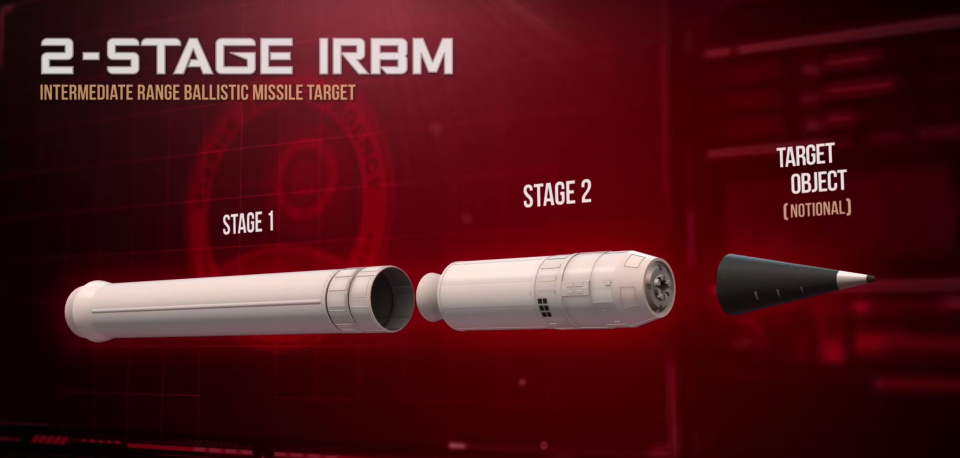
While we don’t know what countermeasures were used, the fact that many modern intercontinental ballistic missile (IBCM) threats incorporate decoys and other types of countermeasures makes this a highly relevant part of the overall test.
https://www.youtube.com/watch?v=gNSR7dXHdCY
In FTG-12, the GBI interceptor — which can be used in either two-stage or three-stage mode — was used as a two-stage missile.
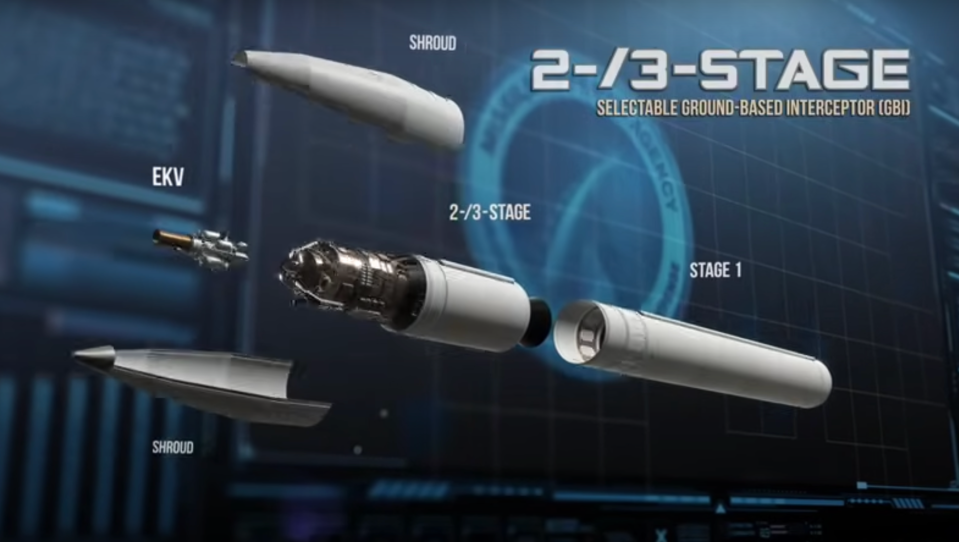
“Once fielded, this capability will give the warfighter greater flexibility in executing the defense of the homeland, while significantly increasing the battlespace for successful threat engagement,” the Missile Defense Agency says of the option to use two or three stages.
Proving that the new capability worked as expected was a significant enterprise in itself and one that involved months of planning, ground testing, and hardware processing. Test data from the moment of target launch through to the actual interception had to be gathered by different Missile Defense Agency assets with thousands of miles between them. These assets stretched from the Broad Ocean Area off Hawaii in the Pacific Ocean to Vandenberg Space Force Base in California, and further northwest to Schriever Space Force Base in Colorado. They would have also included some of an impressive fleet of radar and telemetry ships that regularly support these tests.
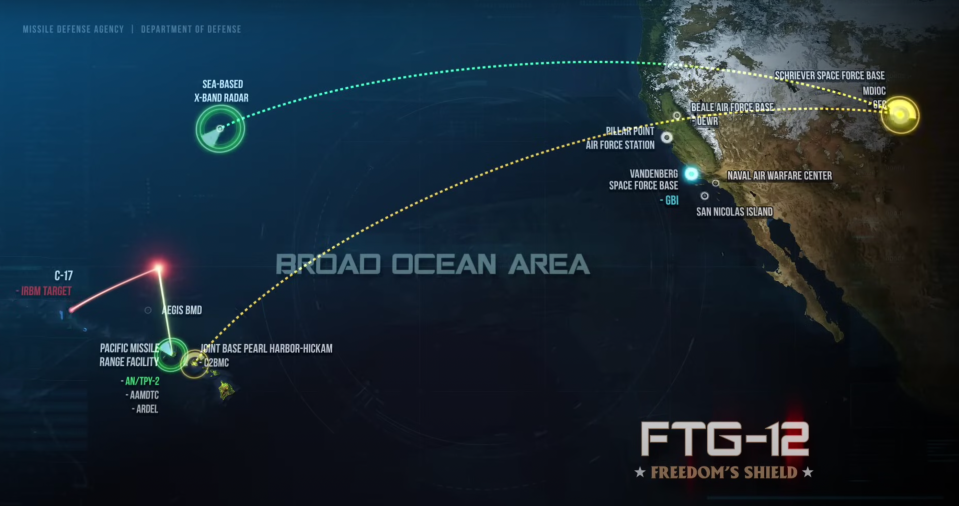
The FTG-12 flight test began when the IRBM target was air-launched from a U.S. Air Force C-17A Globemaster III transport aircraft in the Broad Ocean Area.
Soon after target liftoff, the Army Navy/Transportable Radar Surveillance (AN/TPY-2) radar, a phased-array system, in forward-based mode, acquired and began tracking the target. Target track data from the AN/TPY-2 was forwarded via the Command Control Battle Management Communications (C2BMC) system to the GMD Fire Control (GFC) node at Schriever Space Force Base.
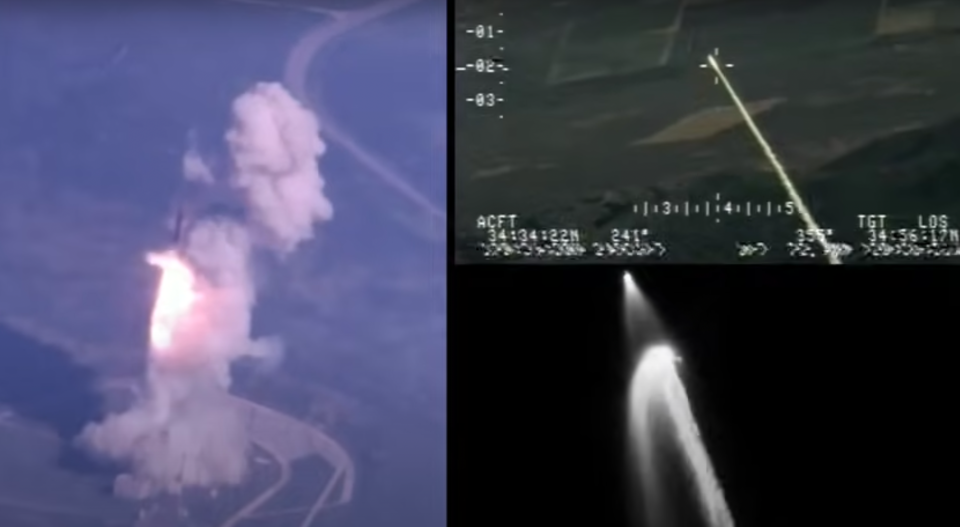
The GFC node at Schriever then used the targeting data to cue the Sea-Based X-Band Radar (SBX) for target acquisition. According to the Missile Defense Agency account, “SBX acquired, tracked, and discriminated the target from its test support position utilizing enhanced discrimination software and forwarded tracking and discrimination data to the GFC as the target proceeded on its flight path.”
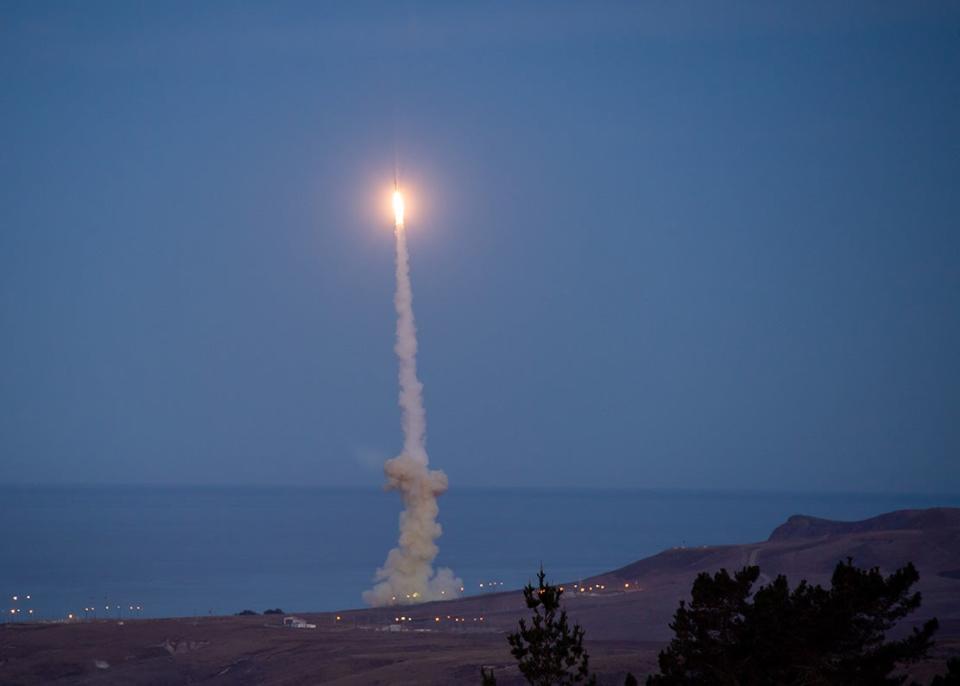
At the right moment, the launch of the GBI was initiated from Vandenberg Space Force Base, with the personnel involved in this sequence exercising “operationally realistic tactics, techniques, and procedures.”
After the burnout and separation of the first stage of the GBI, the second stage ignited and adjusted its trajectory to fly the kinetic-force Exoatmospheric Kill Vehicle or EKV, to the required separation point.
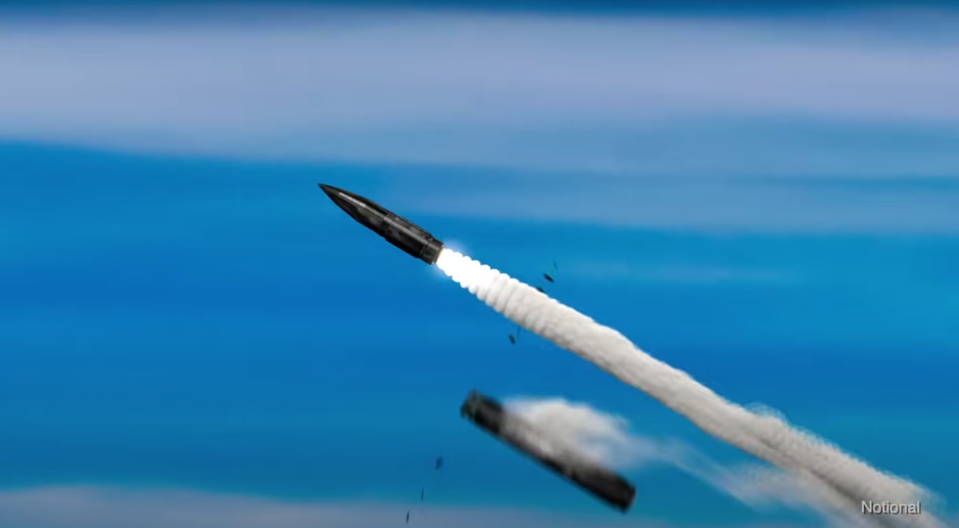
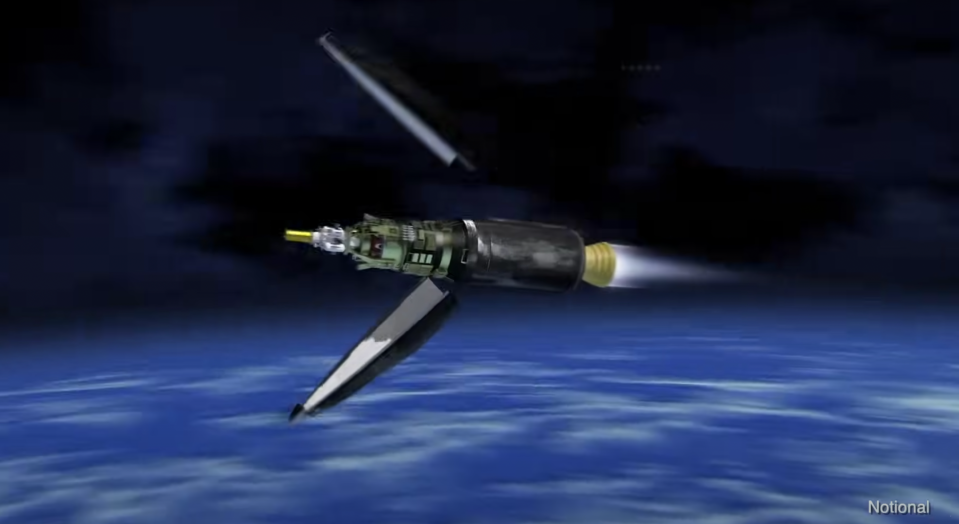
The EKV then broke away from the combined second-and-third-stage booster assembly and received target trajectory updates from the SBX radar.
“Utilizing data from its onboard sensors, the EKV performed target acquisition and target object discrimination,” the Missile Defense Agency continued. “The EKV maneuvered to engage, intercept, and negate the target.”
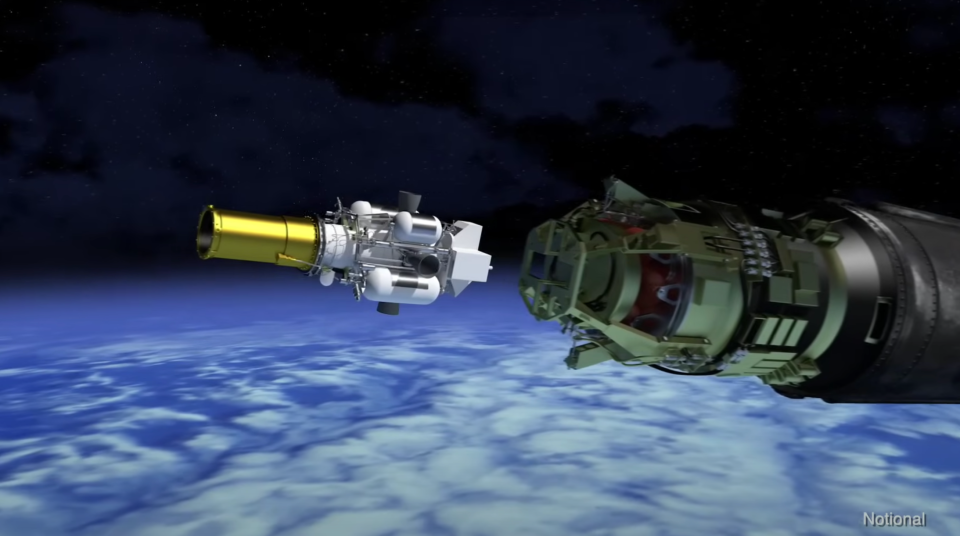
Once all the data has been analyzed, FTG-12 should help pave the way to the fielding of the GMD with the selectable two/three-stage GBI capability. This, the Missile Defense Agency says, “will provide the warfighter greater flexibility in executing missile defense of the homeland, by expanding the engageable battlespace.”
As Debbie Barnett, Boeing’s vice president of Strategic Missile & Defense Systems, added, the selectable capability “opens up the window of opportunity to intercept threats to our homeland.”
While Monday’s interception was billed as a success, this hasn’t always been the case when the GMD has conducted end-to-end tests. In particular, the EKV has had mixed results in trials, which led to a revised concept of operation in which at least two GBIs would be fired at any single incoming threat to increase the probability of a kill. However, a plan to develop an improved Redesigned Kill Vehicle (RKV) was abandoned in 2019, amid “technical problems.”
Footage from a previous test, FTG-06b, including a GBI launch from what was then Vandenberg Air Force Base, California, on June 22, 2014:
https://www.youtube.com/watch?v=ypFKCXRLmcI
Currently, there are 44 GBIs deployed across two sites, with most of those at Fort Greely in Alaska, complemented by those at Vandenberg Space Force Base. Together these are a part of the much wider GMD system architecture, including its complex network of ground-, sea-, and space-based sensors and command and control systems.
While end-to-end tests like FTG-12 are vital to prove that GMD works — especially when new hardware and capabilities are added to it — the overall utility of the system in all but more limited scenarios has been repeatedly questioned.
One on level, as critics of defense against ICBMs would be quick to point out, any new development or capability added to the GMD is also an incentive for the development of a corresponding technology to defeat it.
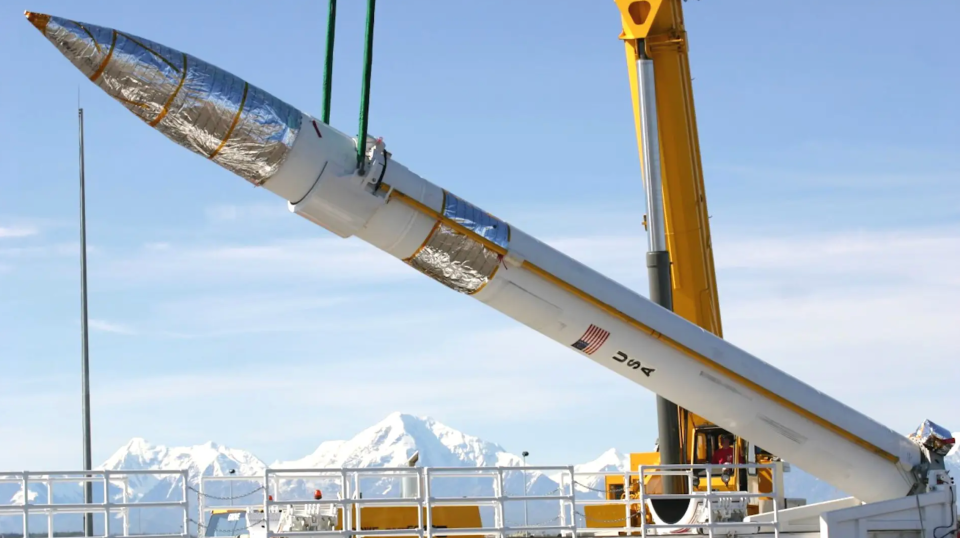
Then there is the inescapable question of numbers. With a force of only 44 interceptors, the current GBD network is a low-density asset only able to respond truly effectively against relatively low-volume ICBM attacks. That might make GBD suitable to defend against attacks from countries like North Korea. But at the same time, the existence of GBD serves as a potential driver to encourage North Korea, and other adversaries, to simply build more ICBMs to overwhelm the system.
https://www.youtube.com/watch?v=US-UgZSs1fo
On the other hand, it needs to be remembered that GBD (as well as the forthcoming Next Generation Interceptor, or NGI) is simply one component of what is becoming an increasingly layered missile defense architecture standing guard over the U.S. homeland. As well as GBD, there is the SM-3 interceptor, one of the weapons at the core of the Aegis Ballistic Missile Defense (BMD) system deployed via U.S. Navy Arleigh Burke class destroyers, Ticonderoga class cruisers, and ground-based Aegis Ashore sites, as well as an expanded capability variant or derivative of the U.S. Army's Terminal High Altitude Area Defense (THAAD) system, and more.
Work meanwhile continues on other new missile defense capabilities, including new concepts for engaging hostile missiles while they are vulnerable in the initial boost phase of their flight, hypersonic weapon interceptors, directed-energy weapons, and even an enormous space-based sensor and data-sharing network to help detect and track threats and cue defenses to try to shoot them down.
Nevertheless, even with the $18 billion being invested in the NGI, to help overhaul the GBD system, there remain obvious concerns about the ability of the entire missile defense architecture to defend the United States against ICBMs, especially a strike involving any substantial number of missiles. The cost of the NGI — including a price tag of at least $74 million for each single interceptor missile — provides a good indication of exactly how expensive the missile defense effort is, for a potentially limited return.
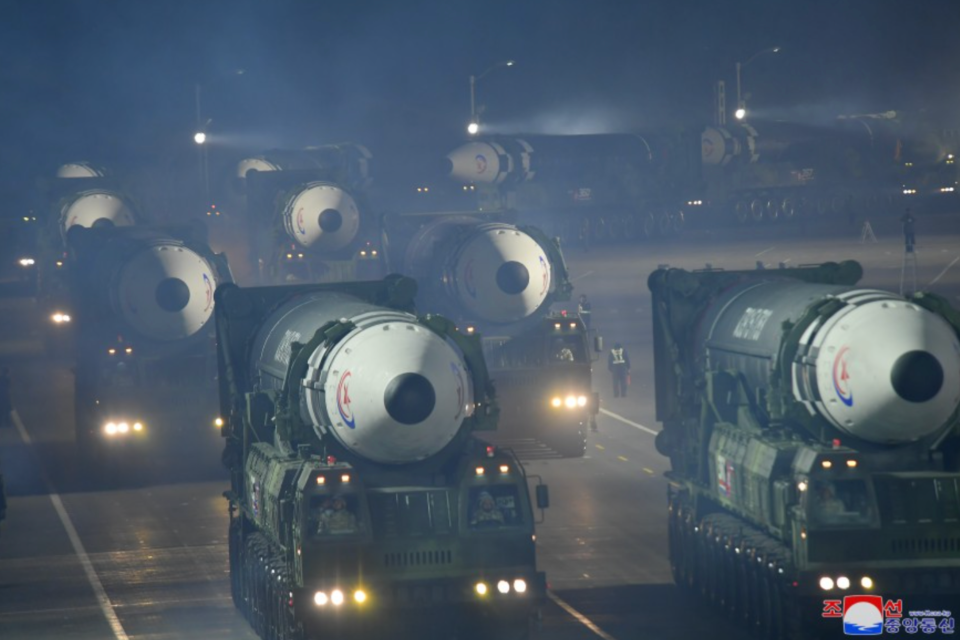
As it stands, new developments and capabilities within missile defense are likely only to be countered by potential adversaries, even smaller ones, to some degree. China, meanwhile, as arguably the fastest-growing threat to the United States, is continuing to field more ICBMs, and at a prodigious rate, and possesses a varied inventory that is already able to oversaturate the system.
However, as long as the United States is at risk from limited intercontinental ballistic missile strikes, especially those that might originate from “rogue nations,” such as North Korea or Iran, investment in Ground-based Midcourse Defense is almost certain to continue. Further tests will be a feature of this, not only to prove the basic efficiency of the system but also to introduce new capabilities as in the case of Flight Test Ground-based Midcourse Defense 12.
Contact the author: thomas@thedrive.com

